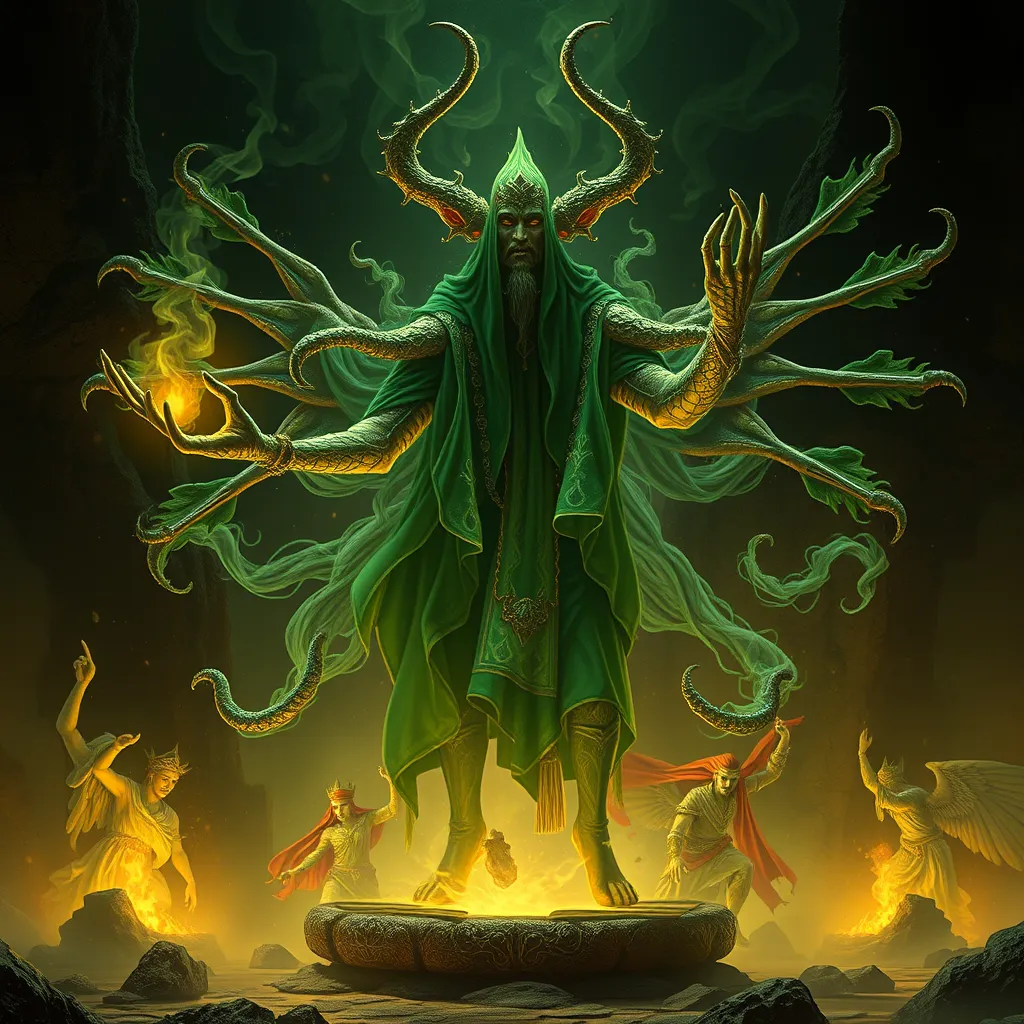The Marid’s Bargain: Unveiling the Powerful Jinn of Ancient Persia
I. Introduction to Jinn in Persian Mythology
Jinn, often referred to as genies in Western culture, are supernatural beings that originate from Islamic and pre-Islamic traditions. Defined as sentient beings created from smokeless fire, jinn possess free will and can be benevolent, neutral, or malevolent. Their origins trace back to ancient Arabian mythology, where they were believed to inhabit desolate places and were capable of shape-shifting.
In Persian folklore, jinn hold significant importance, embodying various human attributes and societal values. They serve as powerful figures in tales that reflect the complexities of human desires, fears, and moral dilemmas. Among these jinn, the Marid stands out as a particularly formidable entity, often representing a blend of wisdom, power, and unpredictability.
II. Understanding the Marid: Characteristics and Traits
The Marid is characterized by its immense strength and size, often depicted as a colossal figure capable of granting wishes. Unlike other jinn, Marids are known for their pride and independence, making them difficult to control. They are often portrayed with elaborate features, including vibrant colors and ornate clothing, which signify their regal nature.
When compared to other types of jinn, such as Ifrits and Ghouls, the Marid is distinguished by:
- Ifrit: Typically associated with fire and often malevolent, Ifrits are known for their cunning and ferocity.
- Ghoul: A creature that feeds on human flesh, Ghouls are often depicted as sinister and grotesque, lacking the nobility of the Marid.
III. The Role of the Marid in Persian Tales and Literature
The Marid features prominently in several Persian tales, most notably in the “One Thousand and One Nights,” where they are often central to the plot. In these stories, the Marid can act as a formidable adversary or a powerful ally, depending on the circumstances of the encounter.
For instance, in the tale of “The Fisherman and the Jinni,” a Marid is trapped in a bottle and released by a fisherman. The Marid initially seeks revenge but is ultimately outsmarted by the fisherman, showcasing the duality of the Marid’s nature—capable of both destruction and cooperation.
IV. The Concept of Bargains and Deals with the Marid
Bargains and deals with jinn are a common motif in folklore, particularly concerning the Marid. These agreements often revolve around the granting of wishes in exchange for a price, which can be anything from a service to the soul itself. This theme reflects the complex relationship between humans and supernatural beings.
The significance of the Marid’s bargain in storytelling can be summarized as follows:
- Temptation: The lure of power and wealth often leads characters to make deals that may have dire consequences.
- Consequences: The outcomes of such bargains frequently serve as moral lessons about greed and ambition.
- Negotiation: The back-and-forth of bargaining highlights the cleverness and resourcefulness of human characters.
V. The Symbolism of Power and Control in the Marid’s Bargain
The interactions between humans and Marids often symbolize the power dynamics inherent in human relationships. The Marid, as a powerful jinn, represents the allure of wielding supernatural power, while humans often embody vulnerability and desperation.
This relationship raises moral implications regarding the nature of control. Making deals with the Marid can symbolize:
- Desire for Control: Characters often seek to control their destinies through the Marid, reflecting humanity’s desire to influence fate.
- Loss of Autonomy: The consequences of these deals often lead to a loss of freedom, illustrating the dangers of overreaching ambition.
VI. The Marid in Contemporary Culture
In contemporary culture, the Marid has continued to influence literature and media. The image of the genie has evolved, often depicted in various genres, from children’s stories to dark fantasy novels. Modern adaptations frequently reimagine the Marid’s character, emphasizing different traits such as wisdom, trickery, or benevolence.
Some notable representations include:
- Film: Movies like “Aladdin” portray the Marid as a comedic yet wise character, emphasizing themes of friendship and loyalty.
- Literature: Modern fantasy novels often incorporate jinn in complex narratives, exploring themes of identity and power.
VII. Cultural and Historical Impact of the Marid in Persia
The Marid has left an indelible mark on Persian art, literature, and architecture. In ancient Persia, jinn were often depicted in intricate artwork, symbolizing the cultural beliefs surrounding the supernatural.
In terms of architectural influence, the designs of mosques and palaces sometimes incorporated jinn motifs, emphasizing their significance in the spiritual and cultural landscape. The Marid’s role in shaping cultural beliefs can be seen in:
- Folklore: Oral traditions have preserved tales of the Marid, influencing moral teachings and cultural identity.
- Art: Visual representations in Persian miniatures often depict encounters with jinn, showcasing their importance in folklore.
VIII. Conclusion: The Enduring Legacy of the Marid in Persian Mythology
The Marid remains a compelling figure in both historical and contemporary contexts. Its stories reflect the complexities of human nature, the allure of power, and the consequences of ambition. The enduring fascination with jinn, particularly the Marid, highlights the universal themes of desire, morality, and the supernatural in global mythology and storytelling.
As cultures continue to evolve, the Marid’s legacy persists, inviting new interpretations and reflections on the timeless narratives woven into the fabric of human experience.



